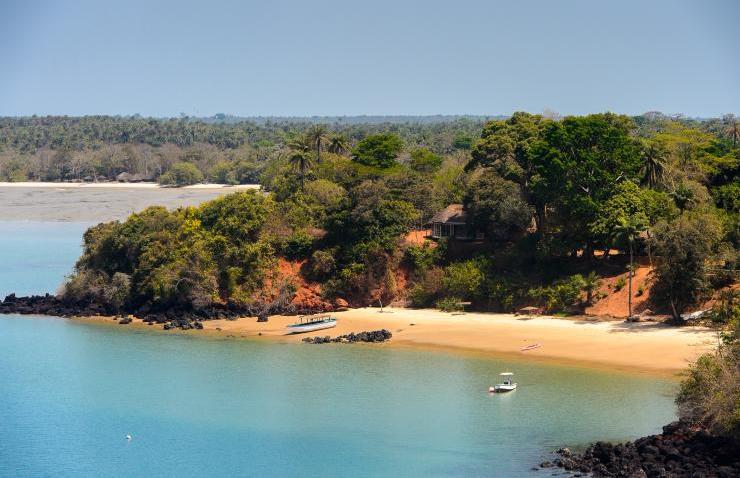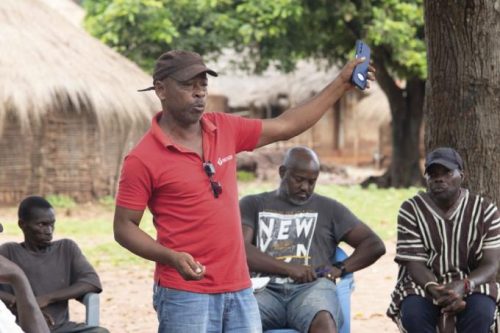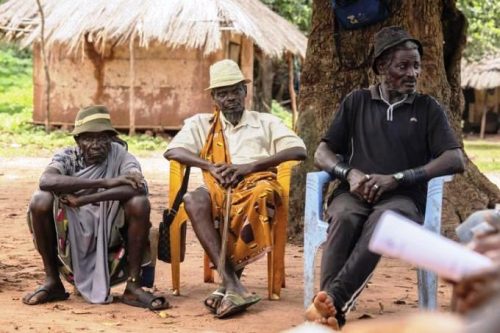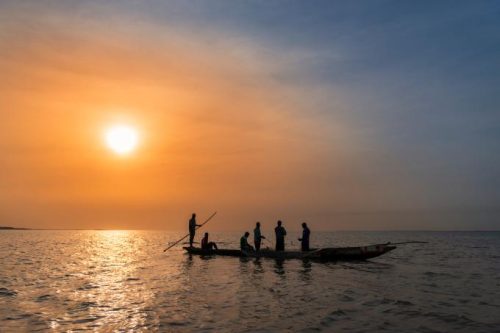Guinea Bissau. The environment and the local culture, keys to development at Bijagós.

How to improve the relationship between local communities and the environment. The great wealth of biodiversity of the Bijagós archipelago. The inhabitants are the custodians of their ecosystem.
The rainy season begins and with it the turtle counting activities in the João Vieria Poilão Marine National Park (PNMJVP). This area belongs to the Bijagós archipelago, located off the coast of Guinea-Bissau, West Africa. It is the third largest colony of giant sea turtles on the continent and every year both the body that manages the protected areas and the population welcome this responsibility with the same enthusiasm.Bijagós is a group of islands and islets declared a biosphere reserve by UNESCO in 1996. Of the 88 islands, 22 are inhabited, with a population of 33,000, although the population is mainly concentrated on five of them.

Antonio Pérez, director of the João Vieria Poilão Marine National Park (PNMJVP) since 2018. (Photo: Sara Martín López)
Biosphere reserves are developed under the “Men and Biosphere” Program (MaB). Selected for their scientific interest, they are mainly based on three criteria: conservation and protection of biodiversity, sustainable economic and human development and logistical support for research and education activities.
The MaB is an intergovernmental program that seeks to establish a scientific basis for improving the global relationship between people and their environment. Launched by UNESCO in 1972, it proposes an interdisciplinary research and capacity development agenda focusing on ecological, social and educational dimensions to improve the livelihoods of human beings. This proposal should include innovative approaches to economic development that are socially and culturally appropriate and environmentally sustainable.
The work of protection
The Institute for Biodiversity of Protected Areas (IBAP), created in 2014, manages the protection of natural spaces with very clear objectives: to promote the conservation of ecosystems and biodiversity, as well as support the creation and management of protected areas.
The challenges of the PNMJVP are more specific: the protection of biodiversity and island ecosystems, the conservation of sea turtles and colonial aquatic birds, the protection and valorisation of the cultural heritage of Bijagós, the contribution to the regeneration of fish resources and the development of eco-tourism.
In addition to the dense palm trees, jungle, mangroves, paradisiacal white sand beaches and crystal-clear waters, the Bijagós archipelago is not only a perfect destination for ecotourism lovers’ dream holidays, thanks to its diversity, but for biologists and scientists it is also a natural laboratory that offers a scenario for studying possible cures for the world’s deadliest diseases.

A group of elderly people at a meeting. Their entire culture revolves around nature, from which they draw everything from food to medicine. The elderly population is fundamental for the transmission of this wisdom. (Photo: Sara Martín López)
Antonio Pérez, originally from Bissau, has been the director of this park since 2018. Here he leads and coordinates activities related to conservation and awareness. “The turtle counting season lasts four months, from August to November. The number of turtles welcomed into the park varies greatly depending on the stage of maturity of the individuals ready to lay their eggs and taking into account various factors such as environmental threats and physical conditions. Green turtles and hawksbill turtles are the most common in this archipelago”, explains Pérez, and adds that “even if we have not reached 100,000 units, the number is high, almost close to that of Costa Rica. In 2020 we reached 60,000 nests on the island of Poilão, which makes us the third most important place on the Atlantic coast.”
To cover this reception period, the Institute for Biodiversity of Protected Areas (IBAP) and the population of the island are responsible for the process. This is one of the reasons why awareness meetings are held in the various villages in which the entire population is invited to participate.These meetings are two-way. On the one hand, the different problems that the population faces in daily life are presented and the islanders are informed and made aware of the protected fishing areas within the PNMJVP and how they can actively contribute to its conservation work. On the other hand, they are encouraged to form associations and present initiatives to participate in projects led by international organizations.
Daily life
The people who inhabit these islands maintain a subsistence economy in which they extract and consume what they need from nature, which results in a high degree of conservation and respect for the environment. The inhabitants are the custodians of their ecosystem.
One of the tasks undertaken and promoted by the local population is collective work. Through associations, they meet periodically to discuss various issues. The awareness work they carry out is extremely important, since maintaining environmental balance directly affects the livelihood of the population.

Fishermen collecting the nets in an old traditional fishing canoe near the island of Orango at sunset. Shutterstock/TLF Images
As in any formal meeting, an agenda is followed, the names of the participants are noted and minutes are drawn up as a summary of the work. In these meetings, questions are raised, and discussed and future activities are established according to a timetable. The whole population is invited: young people, elderly people, women and children.
People’s awareness about biodiversity conservation is very high. They know that their survival depends on maintaining natural resources. Their entire culture revolves around nature, from which they draw everything from food to medicine. The elderly population is fundamental for the transmission of this wisdom, which is different on each island since each has its ecosystem and its species to protect.
On some of these islands and villages, there is no western impact. There are no roads, no cars, no hotels, no electricity, no running water. In these corners of Bijagós, it is understood that economic development will be based on projects linked to the conservation of the environment, species, renewable energy, ecotourism and cultural values. (Open Photo: An island of Bijagós, UNESCO Biosphere Reserve. Shutterstock/Anton_Ivanov)
Sara Martín López



